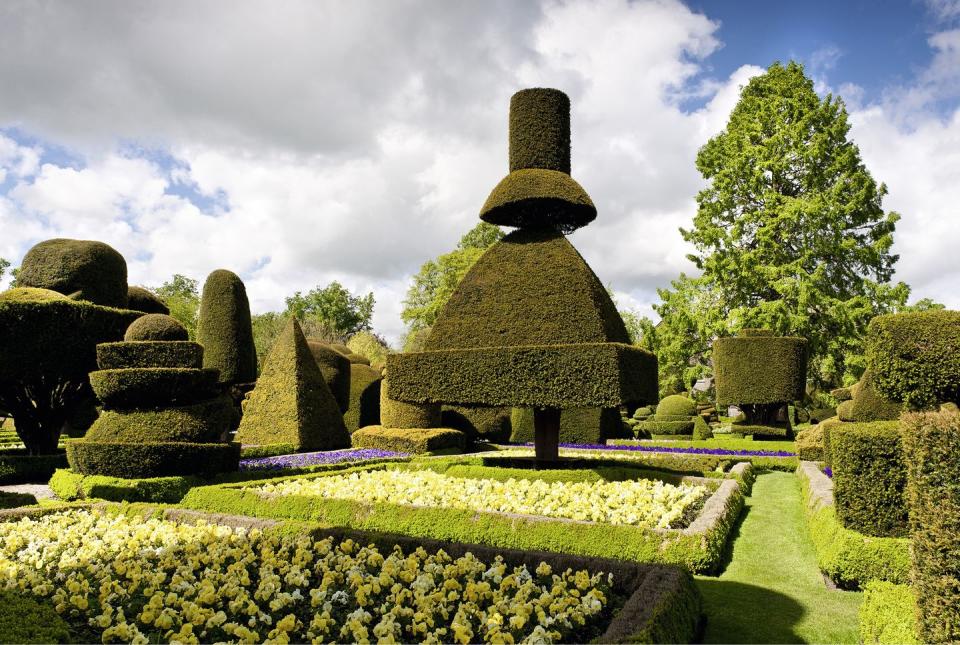The Most Breathtaking Topiary Gardens from Around the World

Our gardens serve as a source of peace and escape — especially in these times, when we aren't venturing much farther than our back doors. And even more than that, our gardens are truly a place to exercise our creativity. Topiaries are believed to have been invented by Julius Caesar's friend Cnaeus Martius Calvinus around 44 B.C. and have evolved since then. The 16th century saw a revival of this art with the parterres and knot gardens of wealthy families, and this tradition of pruning and shaping and training has evolved and progressed as it spread from Holland, France, England, and beyond.
Whether you're planning to start your own topiary garden moment focusing on doable weekend projects, beautifying your garden through potted blooms, or tending your produce plot, being outside and close to nature is certainly a welcome balm for the soul.
Manor d'Eyrignac

Manor d'Eyrignac and its almost 200 acres of gardens was built in the 17th century in the Dordogne area of France and has been open to the public since the 1980s. With around 300 topiaries in its garden and a view of the Black Périgord hills, Manor d'Eyrignac features a slew of designs for visitors to take in: Spheres, cones, pyramids, animals, and other motifs play off one another and create a scene that's transporting.
Longwood Gardens

Situated just outside of Philadelphia and created by Pierre du Pont in the early 20th century, Longwood Gardens sits on land that originally belonged to the founder of the province of Pennsylvania, William Penn. Penn eventually sold it to the Quaker George Pierce, who harbored a love for plants and trees, and when the land came back up for sale, Du Pont purchased it as a mission to rescue the trees and began adding to the garden himself. The almost 1,100-acre grounds now boasts a mix of almost 50 fabulous topiary trees.
Levens Hall Manor

The oldest topiary garden in the world, Levens Hall Manor's garden came to be in the 1690s. It contains over 30,000 varieties of plants all grown in a greenhouse on-site, and the garden has gone largely unchanged since its conception so many years ago. Located in the Kent valley in northern England, this garden boasts boxwood and yew trees manicured into delightful, fantastical shapes that play with the garden's sense of scale — and its visitors' imaginations.
Chateau de Villandry

Chateau de Villandry was founded during the Renaissance period, and each of its owners, including Jean Le Breton, the Marquis de Castellane, and Jerome Bonaparte, have helped shape this Loire Valley estate into what it is today — including its topiaries. Joachim Carvallo scattered 324 yew trees throughout its grounds, and their shapes were influenced by the Spanish roots of the then-owner. The topiaries are now hand-pruned once a year, a painstaking process that can take up to two hours per tree.
Drummond Castle

Placed among the idyllic landscape of Perthshire, Scotland, Drummond Castle and its gardens were established in 1490, with the gardens evolving over the last several hundred years. It was restructured during the Victorian period and once again in the 20th century. Now modeled after a 17th-century Scottish Renaissance garden, its mix of shapely trees of varying heights gives the grounds a whimsical, other-worldly look.
You Might Also Like
